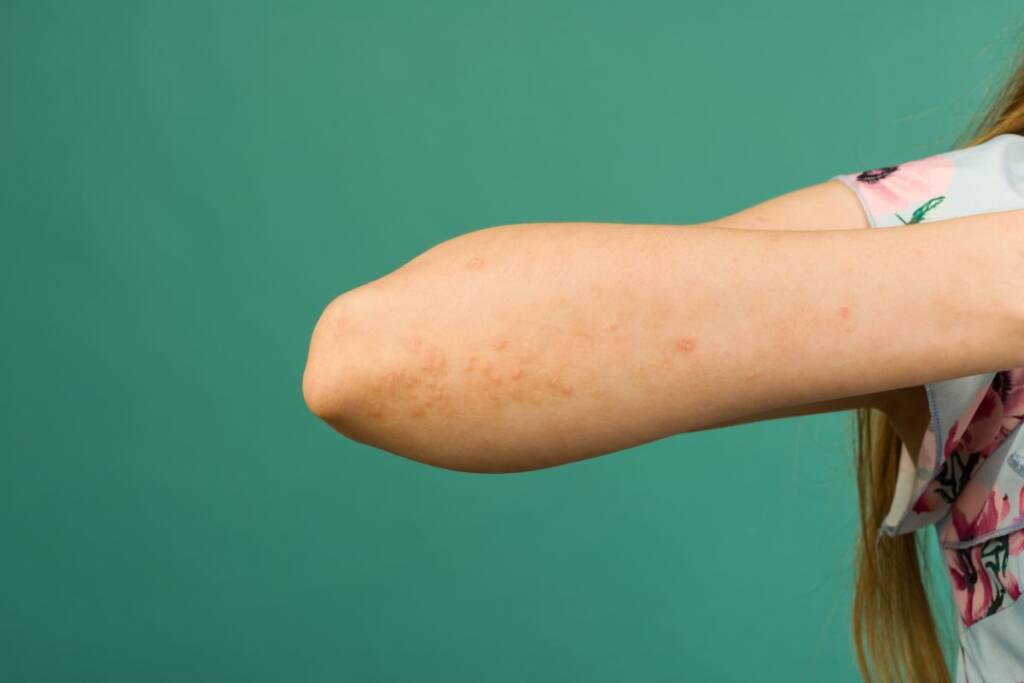Health
Psoriatic arthritis: what it is, what the symptoms are and how to treat it

Psoriatic arthritis is a chronic disease involving the joints. Let's find out what it depends on and how to cure it.
When we talk about psoriatic arthritis we mean a chronic inflammatory disease that affects the joints and usually involves people withpsoriasis or family members who already have this disease. In most cases it is a problem that occurs after psoriasis. In some cases, however, it may occur earlier.
Let's find out, therefore, what it depends on, what the symptoms are and how it is possible to cure it.
The causes of psoriatic arthritis
In general, psoriasis, on which this disease depends, presents with rashes and red patches with bald plaques that appear on the skin. The areas where it manifests itself most are the elbows, the area behind the ears, ankles, knees, hands and feet and scalp. As already mentioned, in most cases it develops before psoriasis. Sometimes, however, the exact opposite can happen. The age at which it usually appears is between the ages of 30 and 50 , and it tends to affect men and women equally.

As for the causes, to date there is still no certain information. What is certain is that it is a problem with the immune system which for some reason attacks the cells of the body creating an inflammation of the joints. The excessive and unmotivated production of skin cells then depends on this.
Although it is not yet known what it depends on, some studies hypothesize that there may be a genetic basis as well as a predisposition in which infections and environmental factors can act as triggers. It is, therefore, a problem that is often difficult to cure and sometimes even to recognize.
As already mentioned, psoriatic arthritis almost always occurs as a result of psoriasis. In some cases, however, this happens even earlier. In these cases, being able to recognize it can be more difficult. However, there are symptoms that can be recognized thus leading to the identification of the problem.
Among the best known are:
– Ache
– Swelling in the joints
– Stiffness
– Lumbar pain
– Bunions
– Conjunctivitis
– Reduction of movements
– Migraine
– Pain in the jaws
– Spondylitis
– Sausage fingers and toes
– Pain in the heels
– Sacroelite
– Generalized fatigue
This disease is one of the chronic ones, therefore it can have periods of remission only to then return to appear periodically. In more serious cases it can also involve other organs such as the lungs, kidneys, eyes and heart.
In general, in the presence of these symptoms it is always good to ask your doctor for help.
After a careful anamnesis, these will be able to act in different ways to arrive at the diagnosis of the disease.
The first thing to do, usually, is to rule out other diseases such as, for example, gout or rheumatoid arthritis . It is also possible to check the state of inflammation, carry out radiological examinations and check the joints through ultrasound and magnetic resonance imaging.
How many types of psoriatic arthritis exist
This disease changes its name according to the areas in which it occurs most. This allows it to be classified in five different ways:
– Rheumatoid-like arthritis that affects the joints symmetrically.
– Asymmetrical oligoarthritis, mild and with less involvement of the joints.
– Ankylosing spondylitis, involving the spine or neck.
– Form affecting the distal interphalangeal joints, with stiffness of the small joints.
– Mutilating, aggressive and deforming arthritis, albeit very rare.
– Psoriatic arthritis: what are the symptoms
How to cure psoriatic arthritis
It is important to know that to date there is still no cure to eliminate the disease. Nonetheless, there are several therapies that can be implemented to relieve the symptoms. There are, for example, both traditional and biological drugs and therapies that are constantly being studied in order to reduce inflammation.
These therapies, although not conclusive, are essential to prevent spriatic arthritis from damaging the joints leading to disability. In many cases, therefore, it is important to take both over-the-counter painkillers (at least in the worst moments) and drugs that keep it under control, preventing the joints from getting worse.
To all this it is possible to add physical activity capable of keeping the joints more flexible and a healthy and balanced diet that allows you to maintain the right weight while avoiding other diseases, such as hypertension , for example, which can worsen the general situation . In conclusion, it is very important to recognize the problem as soon as possible in order to implement the right treatments.
Psoriatic arthritis and disability
This disease is one of those for which it is possible to apply for disability. Once obtained, there are exemptions on the payment of the ticket for the examinations and visits connected to the pathology.
Furthermore, the application can also be extended to have civil disability which will take place with a percentage depending on which there will be allowances such as accompaniment, leave for treatment, monthly allowances and disability pensions.
To obtain it, it is necessary to have a report from the rheumatologist certifying the diagnosis of the disease and to apply to the local health authority. Times and modalities may change from city to city but the possibility of obtaining this little help in the fight against this chronic and debilitating disease remains basic.
Riproduzione riservata © - WT











